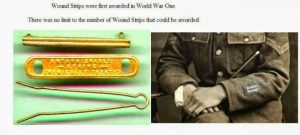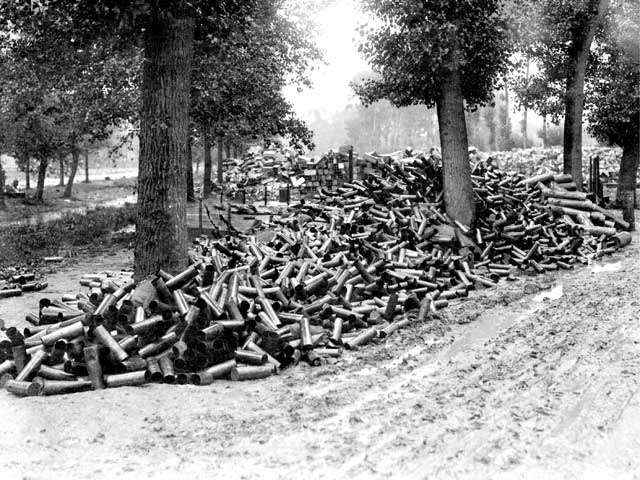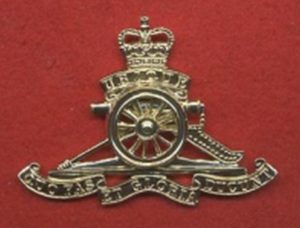Stanley James Blincow [4492]
1895-1944
Father Nm: Henry (Harry) Blincow 1856 [173] died 1937 prob. Northwood : Oldest known ancestor – John Blinco 1660 Whilton.
Mother Nm: Mary Raymont [32] 1861 Purlight Essex died 1942 Willesden
Marriage Dt:1919 to Emily J Coucher, Willesden, Middlesex, Volume Number: 3a, Page Number: 858.
Brother William Frank served in the same Brigade with the Royal Field Artillery. Son Ronald James and daughter Margaret Mary served in the RAF in WW2
Spouse Comments: Emily J Coucher.
Children: Ronald James 1920, Margaret Mary 1922.
(Research): GR[B] Hendon June 1893 GR[D] Hendon Sept, 1893 Nigel B.
1901 Census 80 Railway Cottages, Acton
- Henry Blincow 43 Railway Engine driver
- Mary A Blincow 40
- Harry Blincow 13
- Lilian M Blincow 11
- William F Blincow 9
- Stanley J Blincow 6
1911 Census 83 Railway Cottages Willesden Junction, Brentford
- Blincow Henry Head M 1858 53 Engine Driver
- Blincow Mary Wife F 1860 51
- Blincow Sarah Sister F 1856 55
- Blincow Stanley Son M 1895 16 Junior Clerk, Grocers
WW1
Blincow Stanley James, 1895, Hendon, Gunner, 2462, 961507, 961507, 1/7th Brigade Royal Field Artillery (Charlton; Woolwich).
1914
-
- 15th Sept. Joined the Territorials at Fulham. Occupation Accountants Clerk. Employer R. Jackson and Co, 172 Piccadilly, London.
1915
- 18th Mar. Entered France on the same date as brother William Frank. Given this date for entry to France and the location of Stanley (London), it is highly likely that he was part of the 1/7th RFA 47th Division. Medal Roll doesn’t specify regimental units.
- The 1/7th landed in France on 18th Mar 1915 with 4th London Brigade, 2nd London Division (in May these became the 140th Brigade, 47th Division) and remained with it until January 1918. The division was sent to France in March 1915, one of the first Territorial divisions to enter the fighting, and served on the Western Front for the duration of the First World War.
- 25th -26th May. The Battle of Festubert. The first time the 47th Div fought with the use of its own Artillery. “47th Division’s attack, using 142nd Brigade, achieves success in advancing 400 yards towards Chapelle St Roch, on a thousand-yard front. However, the advance takes them into an area that can be covered by heavy German artillery south of the canal near Auchy-les-la-Bassée. This enemy artillery is beyond the range of British guns, and it does great damage to the troops who have advanced. The Brigade lost some 980 casualties in this shelling, but held on to its position.” 1
- 25th Sept. – 18th Oct. The Battle of Loos. The largest battle of WW1 in 1915 and ultimately a very heavy defeat for the British. General Haig mistakenly thought this would be a great victory (even one to end the war) but without the planning, adequate Artillery fire and specific target maps of advancement. Haig thought the first use of the gas by the British would devastate the Germans but it did not. The British had 60,000 casualties compared to the Germans 26,000 which in itself tells of the outcome. The BEF commander Gen. Sir John French lost his command as a result of the failure of the battle and Haig inherited the role from then on.
 Leading up to the 25th Sept. the divisional RFA brigades all took part in four days of bombardment of the German positions. The Division used gas canisters in the attack on the 25th fired by artillery so that the gas cloud drifted towards enemy lines. This could be the action in which Stanley was wounded see next entry.
Leading up to the 25th Sept. the divisional RFA brigades all took part in four days of bombardment of the German positions. The Division used gas canisters in the attack on the 25th fired by artillery so that the gas cloud drifted towards enemy lines. This could be the action in which Stanley was wounded see next entry.
1916
- 2nd Jan. Evidence of Wounding?. Stanley is with 47th Brigade HQ staff and has possibly been moved to them from the field when injured. On this date, he was discharged to Harfleur an RHA/RA base depot in Le Havre. He is Classified T. B. which I take to mean temporarily a ‘B’ class medical assessment. Defined as free from serious organic diseases, able to stand service on the lines of communication in France, or in garrisons in the tropics.
- Stanley was either wounded ( Another pension record specifies that he suffered Gun Shot wounds Right Arm, Right Leg and left knee) prior to 2nd Jan 1916 or in the period from 2nd Jan until he is shipped home in June. 1916.
- 9th Jun. Embarks for England.
- 10th June Adm. Centre Attested.
1917
- 7th Apr. Posted to 47th Div. Artillery Centre.
- 19th Apr. Northern Command Depot. No 4 Reserve Brigade RFA.
- 22nd Oct. honourably discharged wounded. Stanley was most likely late 1916. He was shipped home to England (we don’t know when). Stanley Ser No 961507 was with the ‘B’ Battery 4th Reserve Brigade before being discharged on 22nd Oct 1917. Address on discharge 63 Goodhall St, Willesden. Pension for disability 16 shillings and sixpence.
Note: Stanley would have most likely been home to attend the marriage of his brother.
Sources
- The Long, Long Trail The British Army in the Great War, 1914-1918. 47th Division battle of Festubert.
- The 47th (London) Division, 1914-1919 edited by Alan H. Maude.
- Loos 1915 by Nick Lloyd.
Medals
 Awarded British, 1914-15 Star and Victory medals plus Silver War badge.
Awarded British, 1914-15 Star and Victory medals plus Silver War badge.

After the War
1919 Electoral Registers
By 1919 Stanley at 65 Gate House, Midland Rl Acton, Ealing.
1929-1939 at 33 Normansmead, Willesden.
“My Uncle Stanley returned from service in WWI and opened a grocer’s shop in NW London that eventually expanded to a chain of six stores.”
Frank Blincow of Hailsham nephew.
Death 1945 age 50 years
Stanley died in 1945 and left belongings to children.
England & Wales, National Probate Calendar (Index of Wills and Administrations).
Name Stanley James Blincow, Probate Date: 20 Aug 1945.
Death Date: 27 Nov 1944, Death Place: Middlesex, England, Registry: Llandudno.
Gallery
There are 9 records in the National Archives for this man. For copyright reasons, they cannot be re-published.


The

part of “SPEARS E L (BRIGADIER GENERAL)” (photographs) 1915-10
Ruins of the village of Loos.

Photograph: Empty shell casings and ammunition boxes representing a small sample of the ammunition used by the British Army in the bombardment of Fricourt, France, on the first day of the Battle of the Somme, 1 July 1916. [Photo courtesy of the Australian War Memorial, AWM H08331, with thanks]


Battle of Le Transloy 1-18 October 1916: Swinging a 60-pounder Mk I gun round to haul up into position at Bazentin-le-Petit.
Comment: The gun is on an Mk II carriage with 5 ft steel tractor wheels.




